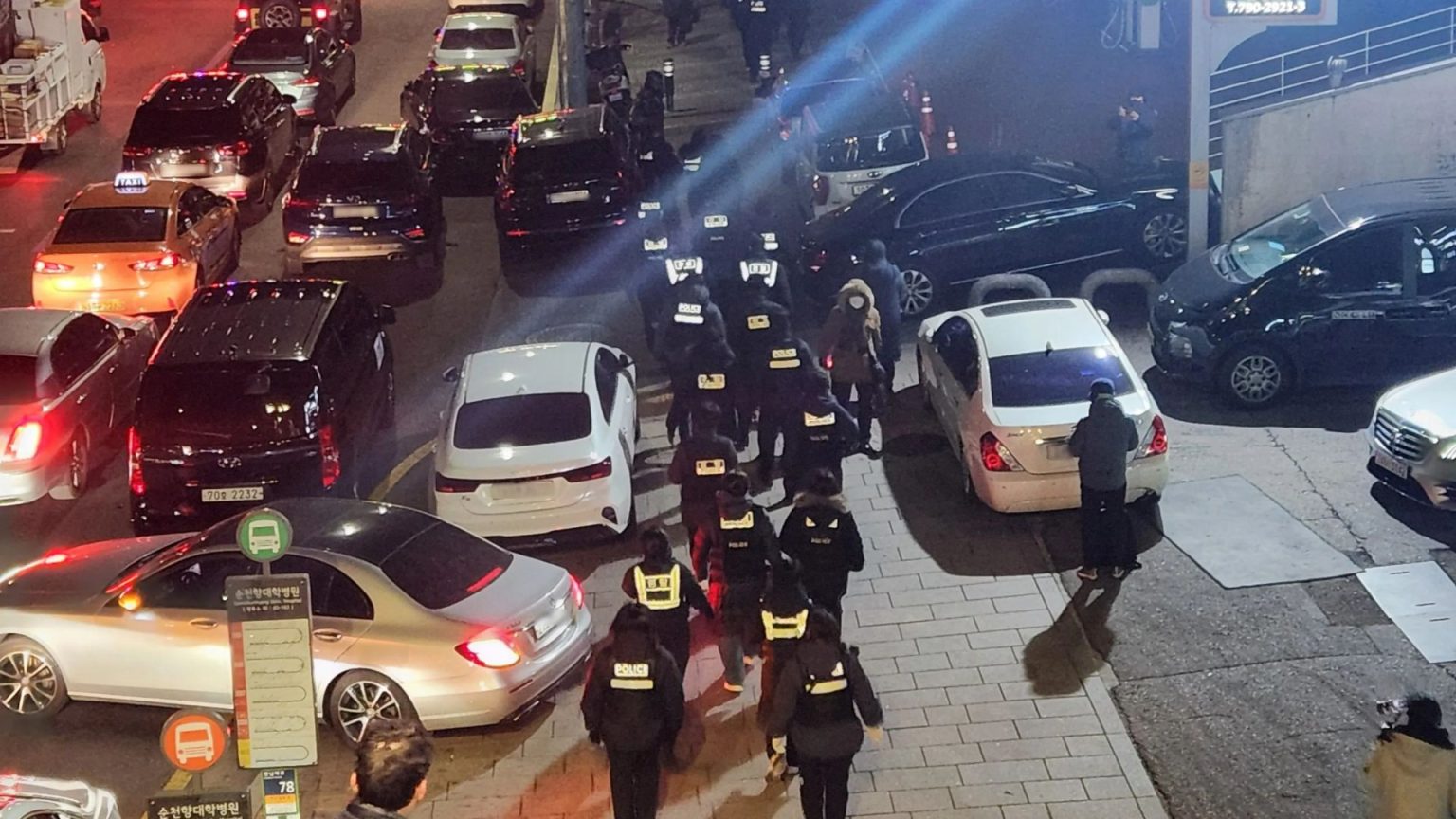The political landscape of South Korea was thrown into disarray as impeached President Yoon Suk Yeol was finally detained following weeks of escalating tensions and a dramatic standoff at his presidential compound in Seoul. Yoon, facing allegations of abuse of power and inciting an insurrection stemming from his failed attempt to impose martial law in December, had evaded arrest earlier in the month. However, as thousands of his supporters rallied outside his residence, forming human barriers against encroaching police, Yoon ultimately surrendered to authorities to “avoid bloodshed,” as he stated in a video message released moments before his detention. The scene outside the Hannam-dong residence was chaotic, with a heavy police presence clashing with fervent pro-Yoon demonstrators who had established their own blockades.
The standoff began in the early hours of Wednesday morning as police, armed with an arrest warrant, attempted to access Yoon’s fortified villa. They were met with resistance from the presidential security service, leading to a protracted period of negotiation and maneuvering. The luxury residence had been reinforced with physical barriers, including parked vehicles and barbed wire fencing, in anticipation of the arrest attempt. The escalating situation highlighted the unprecedented nature of the crisis, marking the first time a sitting South Korean president faced arrest. The legal ambiguity surrounding Yoon’s status following his impeachment further complicated matters, as he technically remained in office despite being stripped of his powers.
The events leading up to Yoon’s detention centered around his controversial attempt to declare martial law in December, a move widely seen as a power grab. Accused of ordering a military commander to forcibly enter the parliament building, even authorizing the use of firearms, Yoon’s actions triggered swift public backlash and mass protests. Citizens confronted heavily armed special forces soldiers deployed to the parliament, bravely forming human shields to protect the democratic process. Parliamentary members defied the cordon, ultimately voting overwhelmingly to impeach Yoon, with even members of his own party supporting the motion.
Despite the impeachment vote, Yoon had remained defiant, refusing to relinquish his position and calling for continued governmental stability. This recalcitrance, combined with his loyal base of support, created a deeply divisive atmosphere and contributed to the tense standoff at his residence. Prior attempts to detain Yoon had been thwarted by his staunch supporters, who physically blocked police access and vowed to protect him “with their lives.” This unwavering loyalty from a segment of the population underscores the complex political dynamics at play and the deep polarization within South Korea.
The arrest itself unfolded dramatically, with a convoy of black SUVs, some equipped with sirens, departing the presidential compound under heavy police escort. Yoon was reportedly transported to the Corruption Investigation Office for High-Ranking Officials in the nearby city of Gwacheon. Reports initially circulated about the arrest of Kim Sung-hoon, the acting head of the Presidential Security Service, during the operation, but these were later denied by police. However, the chaotic scenes and the heavy-handed tactics employed by both sides illustrated the high stakes and the potential for violence.
The situation represents uncharted territory for South Korea, raising significant constitutional questions about the transfer of power and the authority of a president facing impeachment. The absence of precedent leaves a legal vacuum, with the opposing parties advocating for a firm response to any future attempts to obstruct lawful arrests. The ongoing investigation into Yoon’s actions and the legal proceedings that will follow will significantly shape the country’s political future and potentially redefine the relationship between the executive and legislative branches of government. The immediate aftermath of Yoon’s detention will likely see continued protests and political maneuvering as both sides attempt to consolidate their positions and navigate the complex legal and political landscape. The events have undoubtedly left a deep scar on South Korean democracy, highlighting the fragility of institutions and the potential for political instability.


